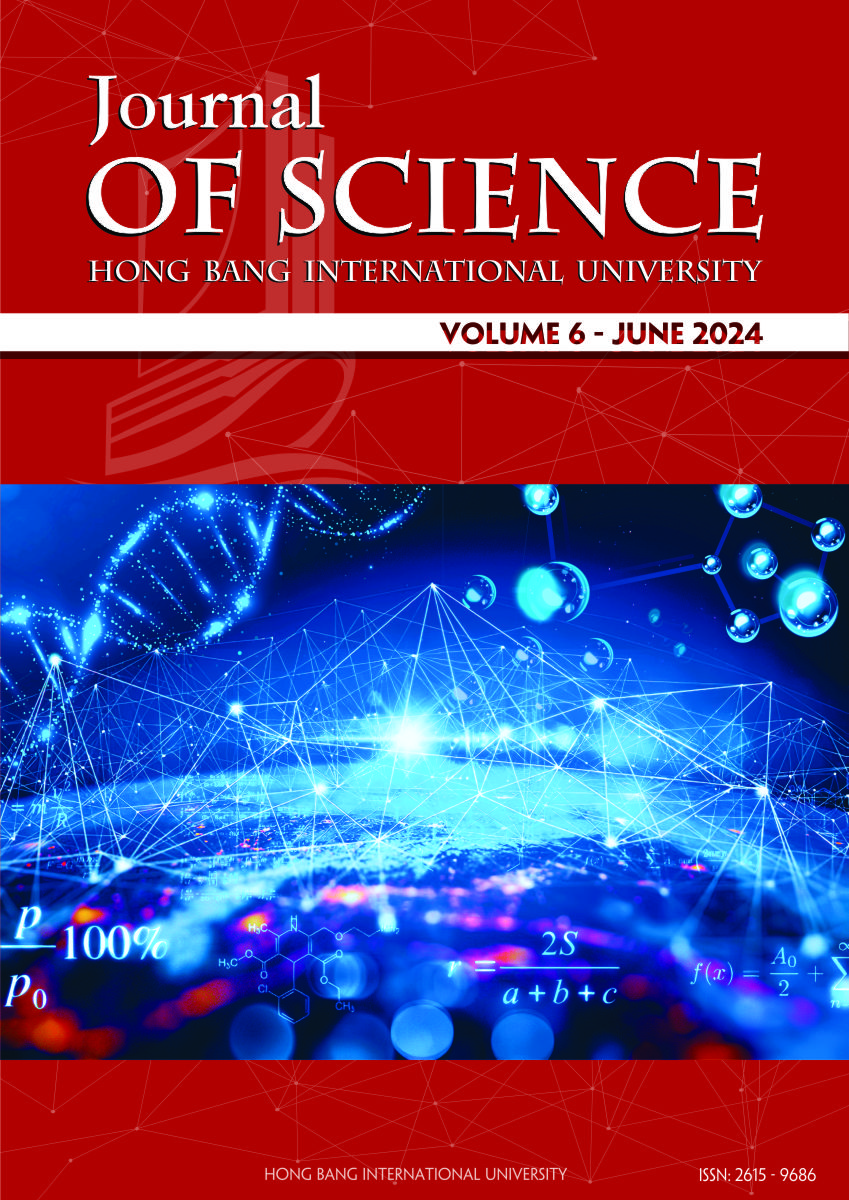Antinociceptive and anti-hyperuricemic effects of ethanolic extract from Homalomena pierreana Engl., Araceae
Các tác giả
DOI: https://doi.org/10.59294/HIUJS.VOL.6.2024.629Từ khóa:
Thân rễ loài Thiên niên kiện Homalomena pierreana, tác dụng giảm đau, tác dụng hạ acid uric máuAbstract
Background: Gout is one of arthritis diseases resulting from high levels of plasma uric acid. Screening of medicinal plants for analgesic and anti-hyperuricemic effects is necessary to prevent and treat gout disease. Objectives: Homalomena has been widely used in traditional medicine for the treatment of bone diseases. Homalomena pierreana is a newly discovered rare species found in Vietnam. The study aims to clarify the antinociceptive and anti-hyperuricemic effects of 45% ethanolic extract from H. pierreana rhizome (H. pierreana extract) in male Swiss albino mice. Methods: Acetic acid-induced writhing and thermal stimulus-induced pain (hot plate) assays were applied to investigate antinociceptive effects. Model of potassium oxonate-induced acute hyperuricemia in mice was used to examine anti-hyperuricemic effects. Results: The results revealed that 5-day pretreatment with H. pierreana extract at the oral doses of 390 mg/kg and 780 mg/kg, as well as a reference drug diclofenac sodium, decreased the number of acetic acid-induced writhing in mice. Administration of the extract at doses of 390 mg/kg and 780 mg/kg also significantly delayed the reaction time of mice to pain (or an increase in the latency to licking/jumping) caused by thermal stimulus in hot plate test but the effect was weaker than those of morphine (10 mg/kg, i.p.). Moreover, H. pierreana extract as well as a reference drug allopurinol, significantly reduced plasma uric acid levels of hyperuricemic mice and restored to the baseline levels. Conclusion: H. pierreana extract possesses antinociceptive and anti-hyperuricemic effects which confirm its usefulness of the gout management.
Tài liệu tham khảo
[1] T. T. M. Hoa, J. Darmawan, S.L. Chen, N. V. Hung, C. T. Nhi, T. N. An, “Prevalence of the rheumatic diseases in urban Vietnam: A WHO-ILAR COPCORD study”, Journal of Rheumatology, vol. 30, no. 10, pp. 2252–2256, 2003.
[2] N. Schlesinger, “Dietary factors and hyperuricaemia”, Current Pharmaceutical Design, vol. 11, no. 32, pp. 4133–4138, 2005.
DOI: https://doi.org/10.2174/138161205774913273[3] V. H. Thien, L. H. Truong, N. P. Nga, T. N. Nam, " Identification of DNA barcode sequence for two Homalomena species (Araceae) in Vietnam", Journal of Science and Technology, no. 39B, pp. 39-49, 2019.
DOI: https://doi.org/10.46242/jst-iuh.v39i03.451[4] L. T. Huong, D. T. M. Chau, N. V. Hung, N. C. Truong, D. N. Dai, "Chemical composition of essential oils of Homalomena occulta (Lour.) Schott and Homalomena pierreana Engl. in Pu Mat National Park, Nghe An Province", Proceeding of 7th National Scientific Conferences on Ecology and Biological Resources”, pp. 1236-1241, 2013.
[5] N. K. Ban, N. T. Ngoc, V. H. Giang, T. M. Linh, L. Q. Lien, T. H. H. Hanh, N. X. Cuong, N. H. Nam, R. Jacinto, H. V. Keo, T. T. An, P. V. Kiem, C. V. Minh, "Sesquiterpenoids from Homalomena piereana Engl.", Journal of Science and Technology, vol. 53, pp. 305-310, 2015.
[6] V. H. Thien, L. B. Tram, N. T. Lan, H. N. H. Yen, L. H. Truong, N. P. Nga, H. V. Long, N. T. D. Hanh, N. N. Tuan, T. N. Nam, "Identification of chemical compounds and antibacterial activity from ethanolic extract of Homalomena pierreana", Journal of Science and Technology, vol. 39, no. 3, pp. 160 - 170, 2019.
[7] N. T. T. Huong, N. T. N. Yen, T. T. Duoc, “Anti-Inflammatory Effects of Ethanol Extract from Homalomena pierreana Rhizome,” Journal of Medicinal Materials, vol. 28, no. 4, pp. 240 - 244, 2023.
[8] L. Đ. Thanh, N. T. M. Huyen, T. H. K. Tan, C. N. Giang, T. M. Ngoc, N. M. Hung, T. T. Lien, “Study on cutting propagation of Homalomena pierreana Engl. in Phu Quoc, Kien Giang Province”, Agriculture & Rural Development – no. 2 –7/2021, pp. 59-65, 2021.
[9] Vietnamese Ministry of Health, "Guidelines for preclinical and clinical trials of traditional medicines and herbal medicines”, Issued together with Decision No. 141/QĐ - K2ĐT dated on October 27th, 2015.
[10] R. C. Hubrecht and E. Carter, “The 3Rs and Humane Experimental Technique: Implementing Change”, Animals (Basel), vol. 9, no. 10, p.754, 2019.
DOI: https://doi.org/10.3390/ani9100754[11] S. P. Gawade, “Acetic acid induced painful endogenous infliction in writhing test on mice”, Journal of Pharmacology & Pharmacotherapeutics, vol. 3, no. 4, p. 348, 2012.
DOI: https://doi.org/10.4103/0976-500X.103699[12] The Institutional Animal Care and Use Committee (IACUC), “Hot Plate Test”, IACUC Standard Procedure, Effective Date: October 2021.
[13] C. T. N. Hieu, H. Q. Thanh, C. T. M. Duyen, N. H. Minh, N. T. T. Huong, “Anti-Hyperuricemic, Anti-Nociceptive and Anti-Inflammatory Effects of Tinospora sinensis (Lour.) Merr. as a Potential Candidate for Gout Treatment”, Journal of Medicinal Materials, vol. 27, no. 5, pp. 291-297, 2022.
[14] N. Muhammad, “In vivo models for management of pain”, Journal of Pharmacy and Pharmacology, vol. 5, no. 1, pp. 92-96, 2014.
DOI: https://doi.org/10.4236/pp.2014.51014[15] M. F. Yam, Y. C. Loh, C. W. Oo, R. Basir, “Overview of Neurological Mechanism of Pain Profile Used for Animal “Pain-Like” Behavioral Study with Proposed Analgesic Pathways”, International Journal of Molecular Sciences, vol. 21, no. 12, p. 4355, 2020.
DOI: https://doi.org/10.3390/ijms21124355[16] P. Milind, Y. Monu, “Laboratory models for screening analgesics”, International Research Journal of Pharmacy, vol. 4, pp.15–19, 2013.
[17] I. E. Orhan, F. S. S. Deniz, “Natural Products and Extracts as Xanthine Oxidase Inhibitors - A Hope for Gout Disease?”, Current Pharmaceutical Design, vol. 27, no. 2, pp. 143-158, 2021.
DOI: https://doi.org/10.2174/1381612826666200728144605Tải xuống
Tải xuống: 170











